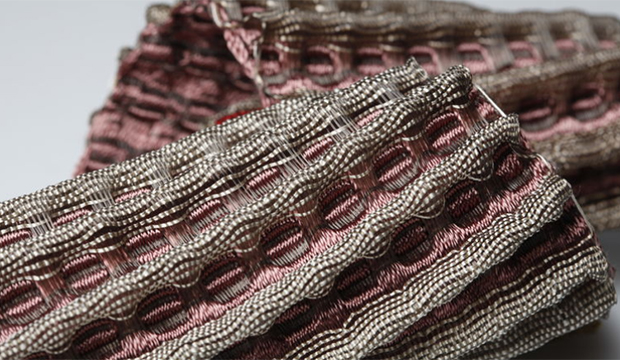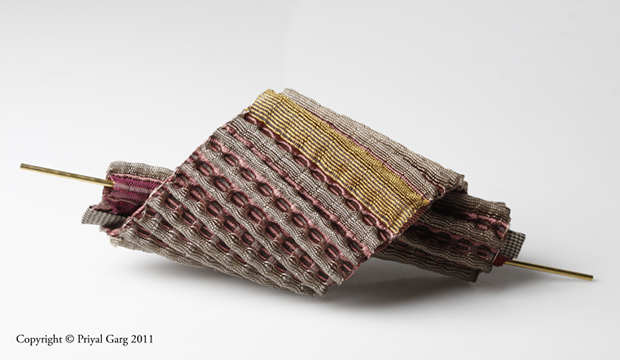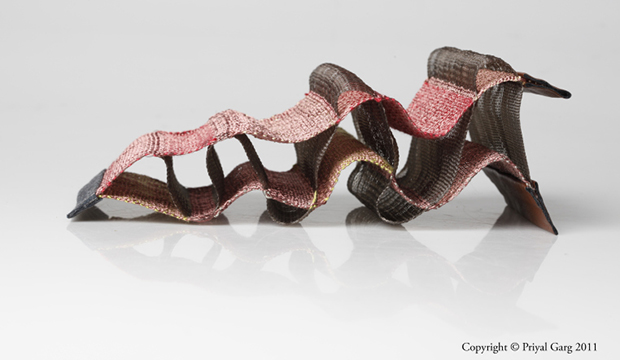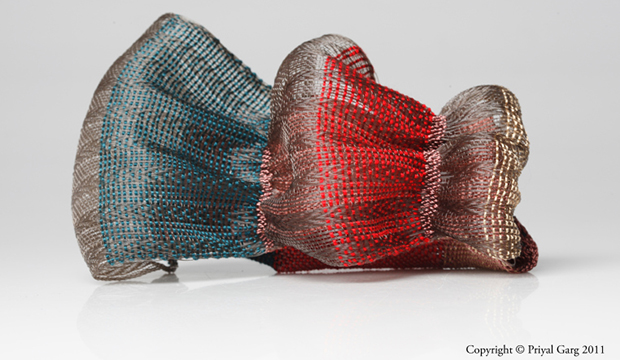
At its most fundamental level, woven fabric is a pretty simple concept. Vertical warp threads are wound onto a loom and the horizontal weft threads are woven in, the end result being a flat piece of cloth.
It is when designers change up the ways in which the warp and weft come together that more complex and interesting textiles are created.
While we often see wovens designers play with the patterns and textures of fabrics, very few (perhaps because it can be cut and sewn later on) experiment with the architectural structure of textiles.
Designer Priyal Garg seeks to push such boundaries, to see how far fabric can go without the help of a needle and thread.
Inspired by the idea of creating contemporary textiles using traditional handcraft process, the three-dimensional fabrics she designs are shaped entirely by weave structure, material and gravity.
Garg uses a hand dobby loom, and while it is stretched out and in the process of being woven, the fabric is flat. However, upon being taken off the loom, the result is transformative; the pieces take on entirely new structures.
Requiring no manipulation once the weaving process is complete, the fabrics bend, fold and twist into unique formations.
Some are layered and architectural textiles, while others take on unpredictable, wavy shapes. The forms are given structure through Garg’s unique yarn choices. By mixing materials such as fiberglass, nylon, and monofilament with more commonly used fibers such as linen and wool, the final outcome is a form that is strong enough to hold it’s shape, yet retains the softness of fabric.
The textiles are also laden with rich, appealing textures that mesh seamlessly with the forms.
Thus far, Garg herself has applied her work in a fashion context as jewelry. The fabrics may be scaled up for use in applications as large as furniture and installations.



